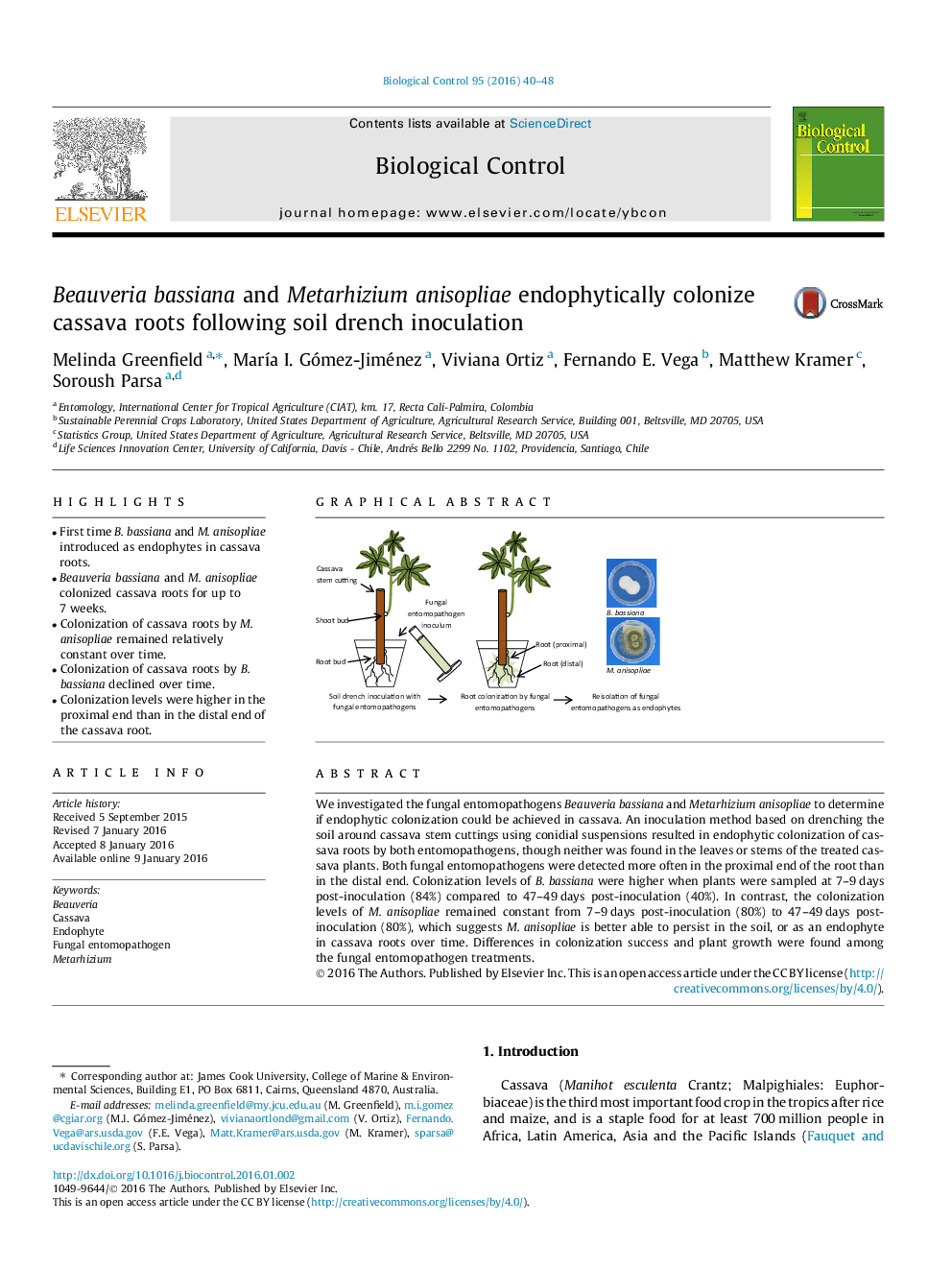| Article ID | Journal | Published Year | Pages | File Type |
|---|---|---|---|---|
| 6372495 | Biological Control | 2016 | 9 Pages |
â¢First time B. bassiana and M. anisopliae introduced as endophytes in cassava roots.â¢Beauveria bassiana and M. anisopliae colonized cassava roots for up to 7 weeks.â¢Colonization of cassava roots by M. anisopliae remained relatively constant over time.â¢Colonization of cassava roots by B. bassiana declined over time.â¢Colonization levels were higher in the proximal end than in the distal end of the cassava root.
We investigated the fungal entomopathogens Beauveria bassiana and Metarhizium anisopliae to determine if endophytic colonization could be achieved in cassava. An inoculation method based on drenching the soil around cassava stem cuttings using conidial suspensions resulted in endophytic colonization of cassava roots by both entomopathogens, though neither was found in the leaves or stems of the treated cassava plants. Both fungal entomopathogens were detected more often in the proximal end of the root than in the distal end. Colonization levels of B. bassiana were higher when plants were sampled at 7-9Â days post-inoculation (84%) compared to 47-49Â days post-inoculation (40%). In contrast, the colonization levels of M. anisopliae remained constant from 7-9Â days post-inoculation (80%) to 47-49Â days post-inoculation (80%), which suggests M. anisopliae is better able to persist in the soil, or as an endophyte in cassava roots over time. Differences in colonization success and plant growth were found among the fungal entomopathogen treatments.
Graphical abstractDownload high-res image (190KB)Download full-size image
